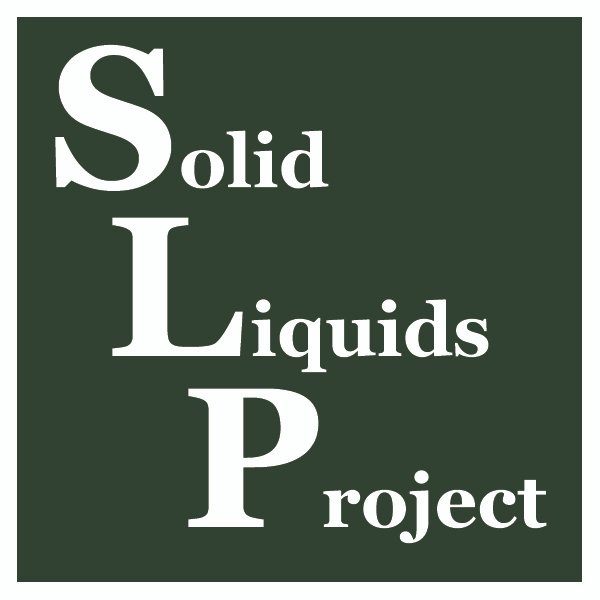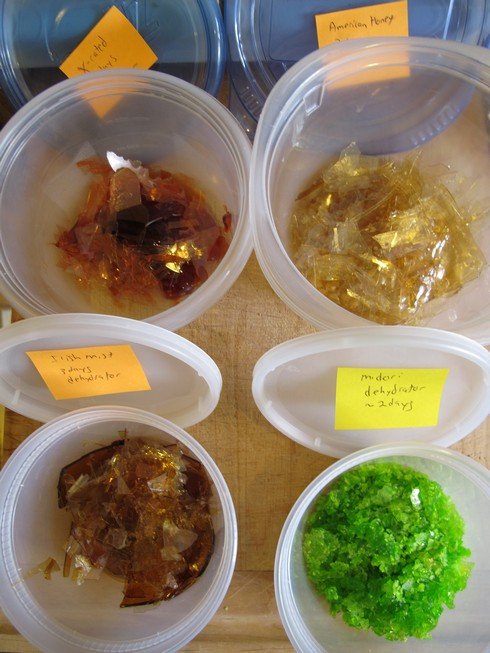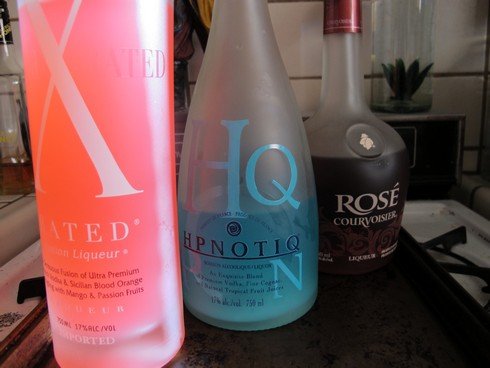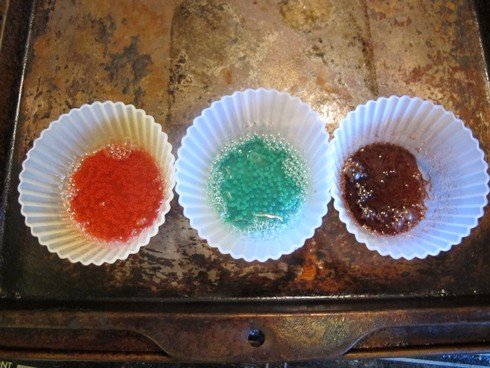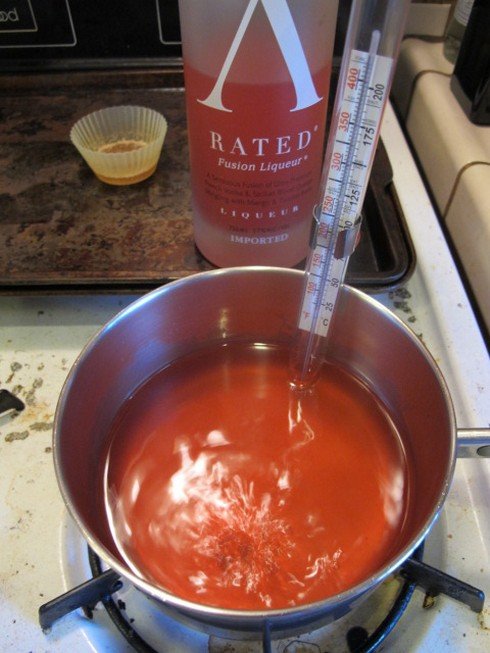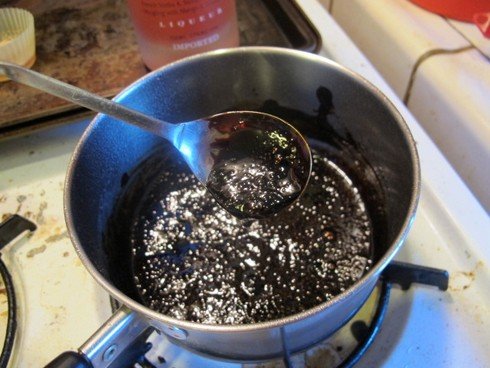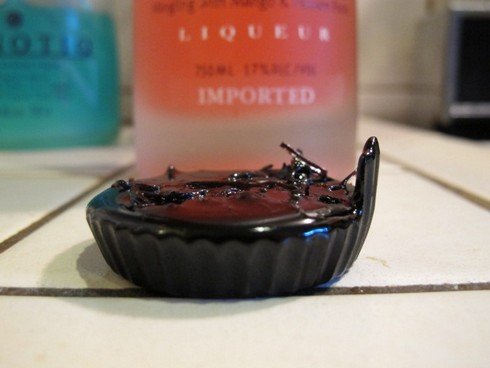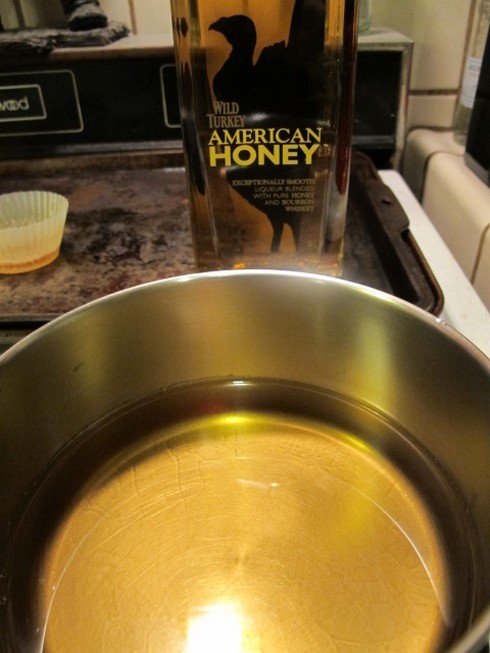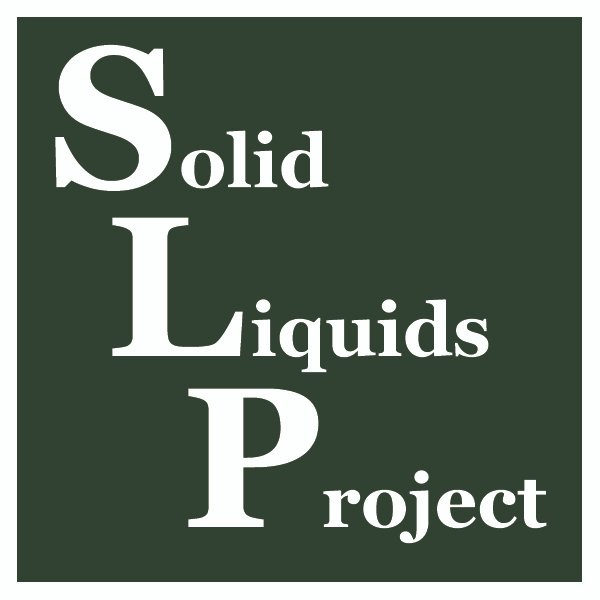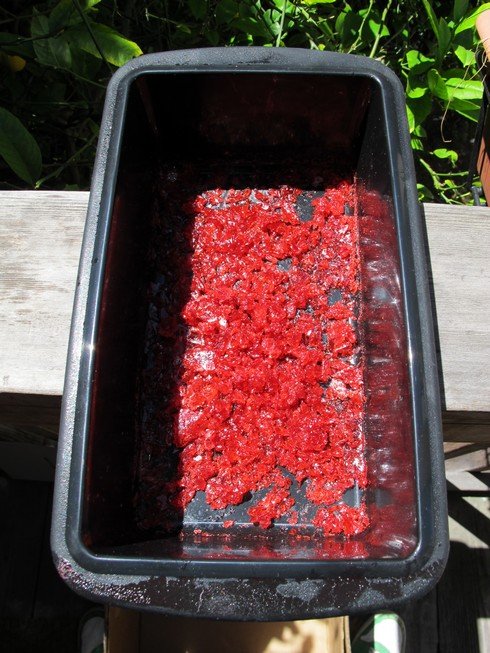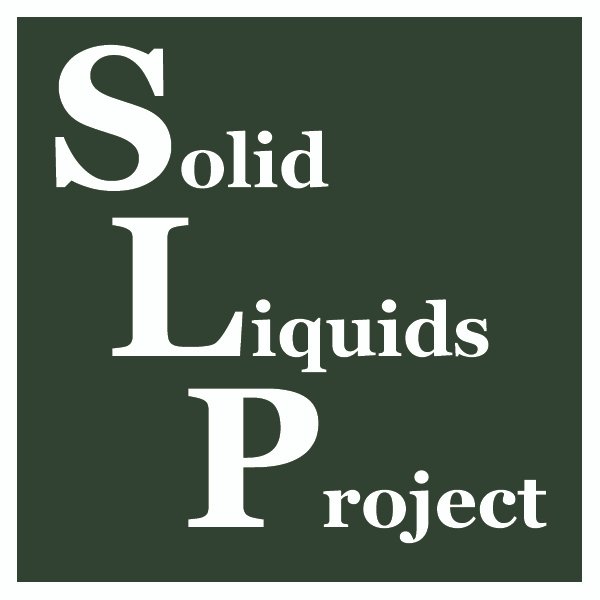 It's nice when other people do experiments for you. Reader Jonathan Faircloth started a blog called The Zymologic Table to record the trials and tribulations of making orange liqueur dust.
It's nice when other people do experiments for you. Reader Jonathan Faircloth started a blog called The Zymologic Table to record the trials and tribulations of making orange liqueur dust.
Though it's not my experiment, this is a continuing part of the Solid Liquids project, in which I am searching for ways to dehydrate liqueurs and find creative uses for them. The index page of all the experiments is here.
After a failed attempt at dehydration through standard means, Faircloth picked up some tapioca maltodextrin and used it to dehydrate a liqueur into a sugary form. After a few trials of his own, it worked.

(Picture from The Zymologic Table)
He found that it worked at a 2:7 ratio of liqueur to tapioca maltodextrin. This might be a method to make dusts out of liqueurs and other alcohol to be used for rimming and other purposes when regular heat-based dehydrating doesn't work. (And as an added bonus, supposedly the alcohol is not removed in this method.)
As he was attempting to use an orange liqueur to rim a glass, he was dissappointed to find that when you do this, the orangeyness of orange liqueur goes away. So he added some orange zest into the tapioca malodextrin to get it back.

(Picture from The Zymologic Table)
I have similarly found that the essential oils evaporate (they are very volatile even at room temperature after all) when you dehydrate with heat, and you can put them back with citrus zests. I even temporarily forgot about that and dehydrated nearly a bottle of Cointreau only to be reminded that orange liqueur when the orange goes away just tastes like sugar. Very expensive sugar.
Looks like I'll be adding some orange zest back into the mix as well.
Keep checking Faircloth's site for his further experiments.
The Solid Liquids Project index is at this link.
